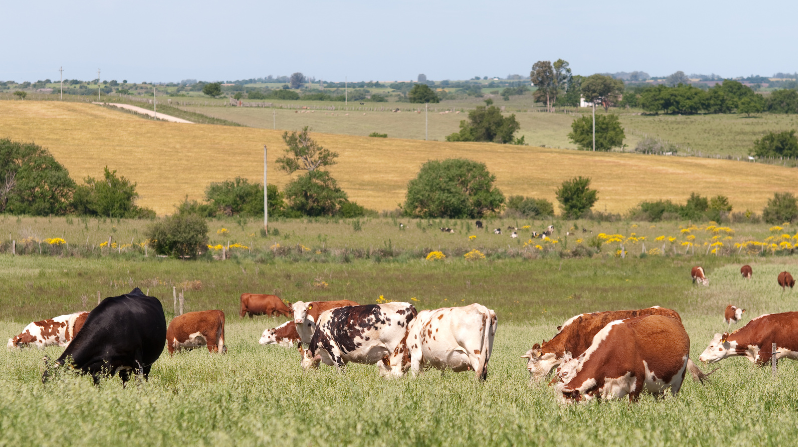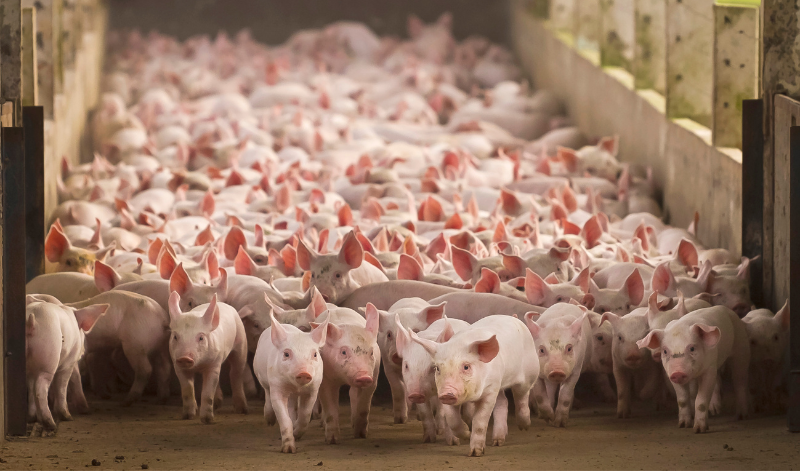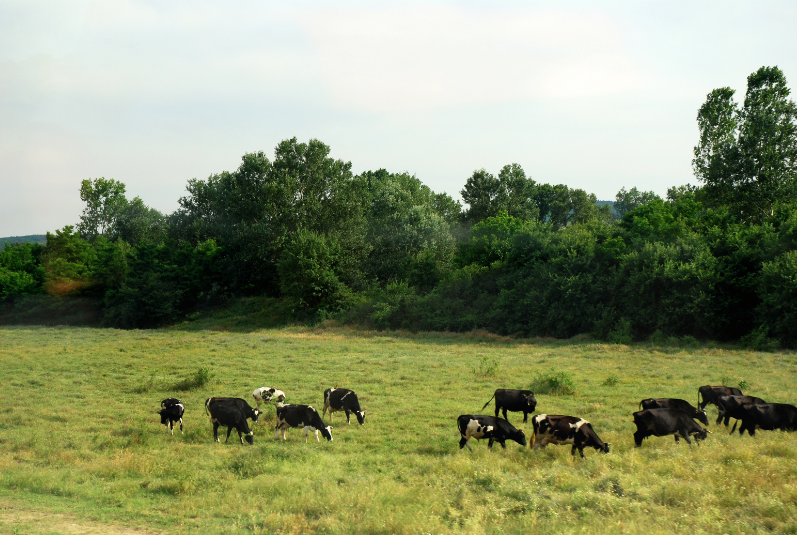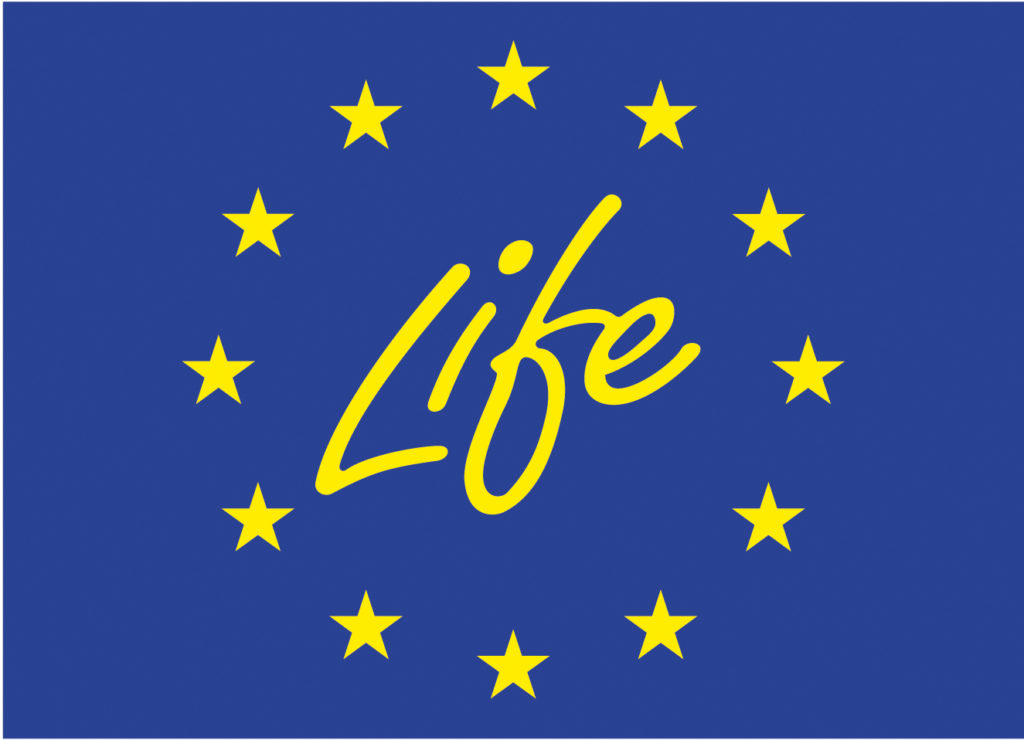
The agri-food system has undergone substantial transformations over the last hundred years. In the case of Spain, we have moved from a food system based on local resources and renewable energies, such as solar energy and organic matter, to another model dependent on external inputs, fossil fuels and minerals. This change in the model was brought about, among other reasons, by the outbreak of the Green Revolution (from the second half of the 20th century), which expanded the use of improved seeds and breeds, along with pesticides, synthetic fertilisers and animal feed for food production. Thus, the industrial agri-food system firmly established itself, identified now as one of the leading causes of climate change and responsible for one-third of anthropogenic greenhouse gas (GHG) emissions.
One significant factor identified as particularly harmful to the environment and human health is the production and consumption of meat. However, we must add that this fact is a source of some confusion, as not all types of livestock farming produce the same environmental impacts.
Socio-environmental impacts of industrial livestock farming

Industrial livestock farming has spread dangerously in Spain. It corresponds to a type of meat production under intensive conditions, i.e. many animals crammed together in macro-farms, fed with fodder that ensures the rapid development of the animal at a low cost. In particular, pig production for export is predominant in Spain. The negative impacts of the production of pork meat begin with the manufacture of feed, which is composed, among other ingredients, of soya imported from countries such as Brazil, Bolivia, Paraguay and Argentina, where areas of great environmental importance are deforested (both for their carbon capture potential and for the biodiversity they harbour) to implement this transgenic monoculture that requires large quantities of agrotoxins to develop. In 2019, Spain imported 2.4 million tonnes of soya for animal feed from El Cerrado, an important savannah in Brazil that lost 500,000 hectares between 2011 and 2015. However, the negative impacts of this production continue with the fattening of animals in Spain, where it is worth highlighting the water pollution generated by the faeces of pigs, called slurry, which, when stored or dumped in large quantities in the fields, contaminate aquifers, which is causing many water sources to become undrinkable. These are just some of the environmental impacts of meat production, which is responsible for 14.5% of GHG emissions.
However, the problem does not end here, as this type of production also has considerable social impacts. In the regions that concentrate on soy monocultures, there are reports of serious human rights violations against local populations, who end up persecuted and displaced from their territories. Likewise, the establishment of macro-farms throughout Spain has meant that, contrary to the claims of the companies that run these businesses, the people who live in rural areas have seen their quality of life diminished, in some cases even causing the loss of inhabitants in villages. This situation has a particular impact, as the development of the industrial agri-food system has been accompanied by the depopulation of the rural areas of our country and the marked loss of farmers and livestock breeders, putting at risk our food sovereignty and the maintenance of the landscape and territory. Although at first glance it may seem that the arrival of large infrastructures to small villages generates more employment opportunities for their inhabitants, this is not the case in practice: large farms are highly technified and employ relatively few people.
On the other hand, a handful of companies dominate the industrial livestock business, i.e. the economic benefits and decision-making power lies in very few hands. Only two companies lead the production and export of soy in Spain. These companies, in turn, are two of the four multinational corporations that control the global grain trade. As for animal feed production and the breeding and fattening of livestock, we also see how large corporations have displaced small companies and family farms so that the domain is currently in the hands of the former, which in no case are accountable for the negative impacts they generate in the territory engaged in intensive meat production.
For all these reasons, it is clear that there is a need for alternatives that make a real contribution to environmental and social sustainability. It is thus essential to distinguish between industrial and agroecological or pastoral livestock farming.
Livestock in agroecology

Agroecology has positioned itself internationally as a science, a set of practices and a social movement that can reverse the devastating effects of the industrial agri-food system and provide food with social and environmental justice for all. This discipline advocates food production based on local land resources, avoiding pesticides and industrial seeds. Its agricultural practices promote the biodiversity of agroecosystems so that the elements that make them up establish synergies between them, achieving good protection against pests and diseases, among other threats. In addition, agroecology encourages recovering and protecting farmers’ traditional know-how, revaluing their contribution and taking it as a reference for overcoming contemporary challenges, in combination with current scientific knowledge. Organisations such as the FAO and the IPCC have identified agroecology as a strategy that can face the challenges of climate change. A greater diversity of crops and the use of traditional seeds and breeds have shown a great capacity to adapt to changes. On the other hand, agroecology guarantees labour rights and dignified life for producers and allows consumers to regain the ability to act and make decisions in the food chain.
Thus, agroecology bases livestock farming on grazing, i.e. the animals feed on grass and other natural resources (bushes, stubble, fruit, etc.) that they find in the environment and cannot be used directly as human food. Traditionally, livestock fed mainly on this kind of resource, such as grass or household waste, so there was no direct feed-food competition; one of the major problems in industrial livestock farming today as the current system allocates one-third of arable land for animal feed.
Thus, extensive livestock farming or grazing partly recovers these practices and commits to linking livestock production to the territory, with the limit of animals set by resource availability. Livestock grazing out in the open uses the resources available, allowing them to preserve the landscape and prevent fires by managing the forest biomass without machinery or extra energy. The maintenance and use of pasture contribute to mitigating climate change by sequestering carbon in the soil. In addition, grazing implies that animals deposit their faeces directly on the ground, where fauna and microorganisms decompose them. This fact helps preserve and even increase the life and fertility of the soil. Agroecology also commits to using local breeds adapted to the territory and more resistant to disease and extreme conditions, some of which are in danger of disappearing. There is evidence that extensive family livestock farming prevents rural depopulation by fixing the population and generating local economies and short marketing chains, where the food they generate has a high-quality nutritional profile.
However, despite the great benefits that extensive livestock production and pastoralist farming bring to the territory and local communities, it is under considerable threat and is an under-recognised and undervalued activity. It is critical to maintain communal pastures and livestock routes and help small producers by knowing and buying their products. In the climate emergency in which we find ourselves, especially in the Global North, it is essential that we drastically reduce our consumption of animal products, but also that our consumption is responsible and opt for meat, dairy products and eggs that come from pasture and family farms in our territory, fairly compensating the work of producers, both for our health and for that of the planet.
References
Amigos de la Tierra (2022). La urgencia de una transición agroecológica en España (in Spanish).
Ecologistas en Acción (2020). Los rostros de la soja (in Spanish).
Ecologistas en Acción (2021). [Informe] Con la soja al cuello: piensos y ganadería industrial en España (in Spanish).
IPCC (2019). Special Report on Climate Change and Land — IPCC site
About the author
Doctoral student in INGENIO [CSIC – UPV].
Member of the Chair in Agroecology and Food Systems | UVic

